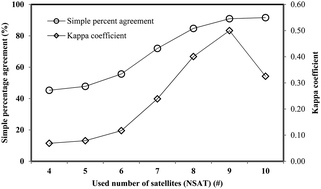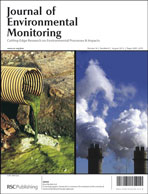A new analytical method for the classification of time–location data obtained from the global positioning system (GPS)
Abstract
Although the global positioning system (GPS) has been suggested as an alternative way to determine time–location patterns, its use has been limited. The purpose of this study was to evaluate a new analytical method of classifying time–location data obtained by GPS. A field technician carried a GPS device while simulating various scripted activities and recorded all movements by the second in an activity diary. The GPS device recorded geological data once every 15 s. The daily monitoring was repeated 18 times. The time–location data obtained by the GPS were compared with the activity diary to determine selection criteria for the classification of the GPS data. The GPS data were classified into four microenvironments (residential indoors, other indoors, transit, and walking outdoors); the selection criteria used were used number of satellites (used-NSAT), speed, and distance from residence. The GPS data were classified as indoors when the used-NSAT was below 9. Data classified as indoors were further classified as residential indoors when the distance from the residence was less than 40 m; otherwise, they were classified as other indoors. Data classified as outdoors were further classified as being in transit when the speed exceeded 2.5 m s−1; otherwise, they were classified as walking outdoors. The average simple percentage agreement between the time–location classifications and the activity diary was 84.3 ± 12.4%, and the kappa coefficient was 0.71. The average differences between the time diary and the GPS results were 1.6 ± 2.3 h for the time spent in residential indoors, 0.9 ± 1.7 h for the time spent in other indoors, 0.4 ± 0.4 h for the time spent in transit, and 0.8 ± 0.5 h for the time spent walking outdoors. This method can be used to determine time–activity patterns in exposure-science studies.


 Please wait while we load your content...
Please wait while we load your content...